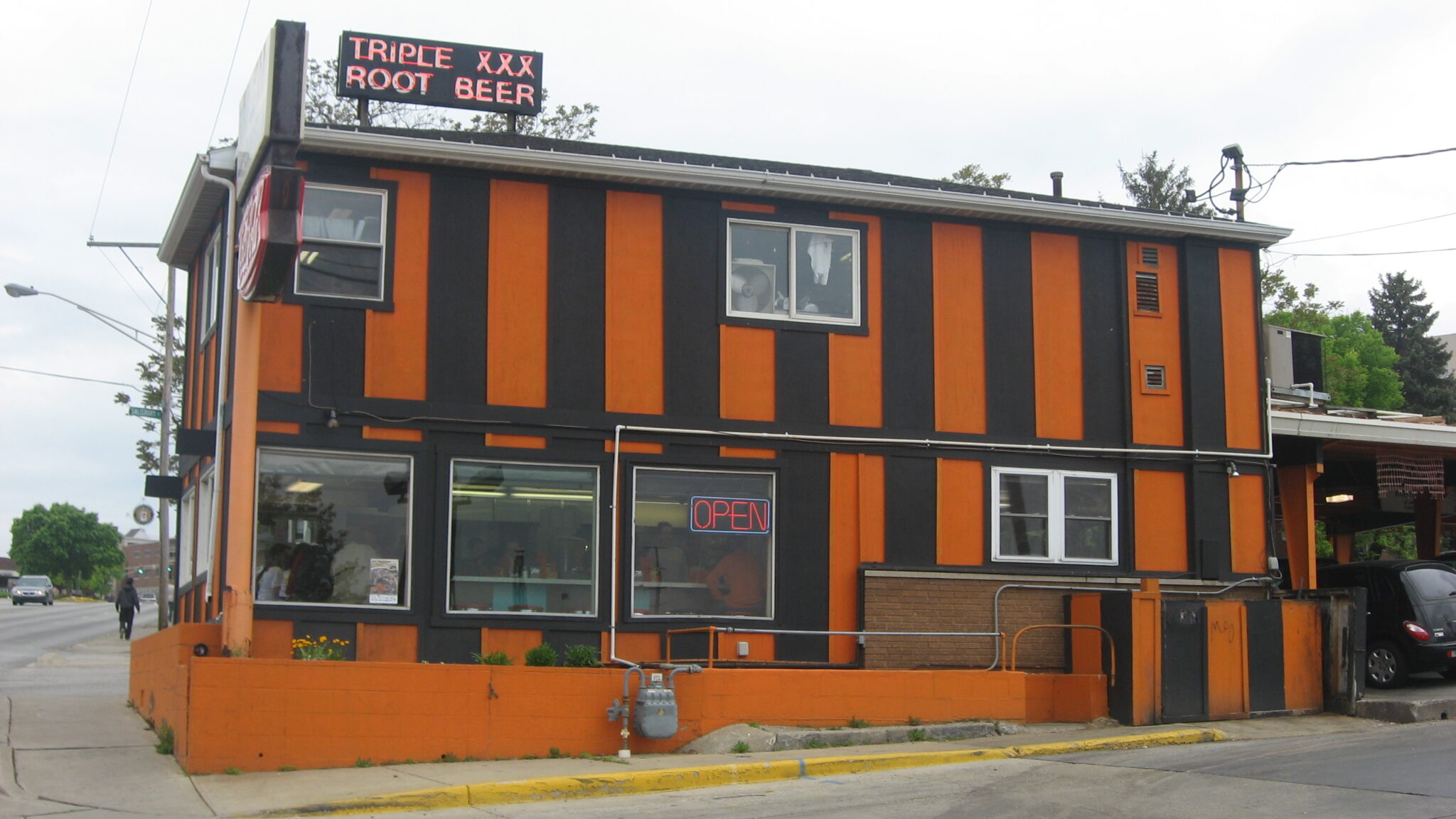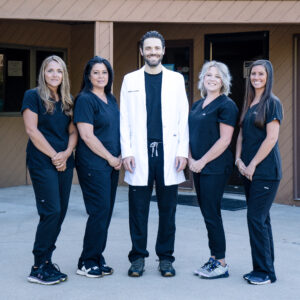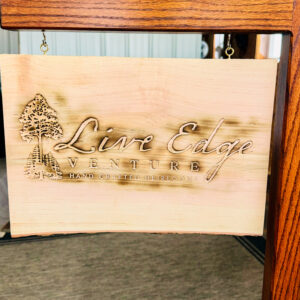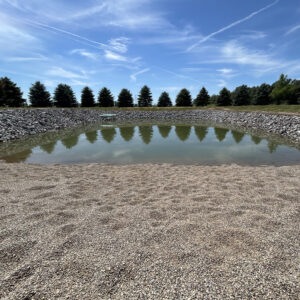Indiana Restaurant and Dining Firsts
Writer / Jeff Kenney
Photography Provided
The Feast of Saint Valentine (better known to us nowadays as Valentine’s Day) approaches, and in addition to the inevitable purchases of cards, candy and flowers for that special someone, the other near-ubiquitous means of marking the occasion is a (hopefully) romantic dinner, often shared by the couple at an eatery that’s a bit more fitting to the holiday than the drive-through of the nearest fast-food joint – though for those with busy lives and a handful of kids, the latter may have to do in a pinch.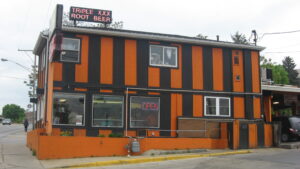
So while it’s safe to say that romance (whether on February 14 or any day of the year) has been around as long as human beings, this month we’ll take a brief look at something a bit more contemporary, but nonetheless boasting an interesting history of its own: historic eateries of Indiana.
The very oldest eateries offering food and refuge to the public are no doubt lost to history and were almost certainly log cabin homes (or even Native American wigwams), opened up to accommodate the first non-Native travelers entering what is today Indiana via critical waterways like the Ohio or Wabash rivers or Lake Michigan.
Most of these are lost to history, or might be referenced as footnotes in local or regional histories, but what is understandably better documented are claimants to the title of “oldest restaurant in Indiana,” by which is actually meant “oldest continuous restaurants in Indiana.”
And while compiling such a list ought to be easy enough, the devil, as they say, is in the details, as any internet search on the subject will reveal. What is meant by “oldest restaurant” gets muddied by questions of whether the establishment exists in the same building, or under the same name. Is it a restaurant per se, or a tavern/inn? What if it’s a not-so-ancient restaurant existing in the oldest building to house such an establishment?
For purposes of this article, then, we’ll content ourselves with referencing what appear to be the most valid and interesting contenders for the title, and the reader may sort out the nuances. And regardless of how one parses out the details, many of us might be rather amazed at just how old some restaurants, including some in the Lakes Magazine area, actually are.
However, the restaurant that might arguably take the prize simply from date of establishment alone is almost as far away from the local area as one can get and still remain in Indiana. This makes sense if one realizes that most of the earliest forays into today’s Hoosier state began as folks from the east coast made their way west via the Ohio River, which of course forms the southern border between today’s Indiana and Kentucky.
Thus, much of the oldest of nearly everything is in some geographic proximity to that waterway. Such is the case of the Log Inn, built in 1825 by Henry Haub as a noonday stage-coach stop and trading post, and located about a dozen miles north of Evansville, in Warrenton, Indiana.
Consider that, in 1825, Indiana had only been a state for nine years and – as a reference point for local readers in northern Indiana – the Potawatomi would still reside in this area for another 13 years. So the Log Inn dates back a bit further than the local burger joint!
The Log Inn’s greatest claim to fame was an 1844 visit by Abraham Lincoln during the future president’s campaign in support of Henry Clay, but it also was ostensibly used as a stop on the Underground Railroad, was a busy stop on the old Dixie Highway that ran between Florida and Chicago, and it once boasted a dance hall above the tavern and store.
Arguably the Log Inn fits into the aforementioned category of complexity regarding its pedigree as “oldest restaurant,” as the entity was converted into strictly a restaurant in 1947, though undoubtedly food has been served there since its inception, so its “earliest” status seems justified. And besides being historic, the Log Inn remains popular, especially for its fried chicken, and was featured in the Food Network’s “Best of Viewer’s Choice” program.
Nearly as old is the Broadway Tavern and Hotel in Madison, Indiana, which dates to 1834. One notable event in the Broadway’s past took place in April of 1861, when a traveling theater troupe stopped to perform at the Madison Theater. One member, a young actor named John Wilkes Booth, was slashed across the face by his angry fellow actor and girlfriend. The sheriff duly summoned, the young woman was arrested and soon thereafter the troupe left town. Booth, of course, would gain infamy as the assassin of President Lincoln just four years later (that story, in fact, made it to the famous radio show “The Rest of the Story,” narrated by the legendary Paul Harvey).
Along similar lines to other “oldest” status complexities, the Broadway is said to qualify not necessarily as the oldest restaurant per se, but the oldest restaurant and hotel in the Hoosier state.
Just one year newer than the Broadway – that is, dating to 1835 – and much closer to home is the Knickerbocker Saloon in West Lafayette, which claims the title of Indiana’s oldest bar.
As long as there are people in a given locale, there’s bound to be a tavern, and in 1835 the Gault House Tavern, located inside the Lahr Luxury Hotel, became the first site of legal drinking in Hoosier territory (the first liquor license issued in the state was issued to the tavern and is still displayed on its wall). The establishment’s name was changed to the Cherry Wood Bar in the 1850s and the Knickerbocker Saloon in 1874, by which time the hotel had closed. The walnut bar that was installed in 1891 remains today.
The word is that President Grant, Mark Twain, Al Capone and Neil Armstrong all patronized the Knickerbocker and, returning to the theme of President Lincoln’s assassination, the train carrying his body across the country is said to have stopped there for public viewing in front of the Knickerbocker. It’s worth noting that the bar did have to close for a time after a fire, which may seem rather irrelevant but will factor into our story later.
Another early Hoosier eatery (perhaps the oldest in northern Indiana) proximate to the local readership area is the Nine Mile Restaurant, located on U.S. Highway 27 in Fort Wayne.
One of the earliest forays of people of European descent into northern Indiana was to a fort eventually named for legendary General “Mad” Anthony Wayne, and among the very old trails through the area was the notable Wayne Trace (Anthony Wayne’s army had marched through it after leaving Fort Wayne in 1794). Lesser known was the Piqua Road, surveyed in 1830 and doubtless following an ancient Native American trail, which would become today’s U.S. Highway 27.
It was a well-worn pioneer track into the Fort Wayne area, and in 1837 John Karn opened a tavern at the site of today’s Nine Mile Restaurant. It was rebuilt in 1850 in Greek Revival style and renamed Nine Mile House due to its location exactly nine miles from the Allen County Courthouse. It became a significant gathering place in that part of the county.
Though a series of renovations took place in the ensuing years, the restaurant’s original roofline is still visible, and a down-home menu approach prevails.
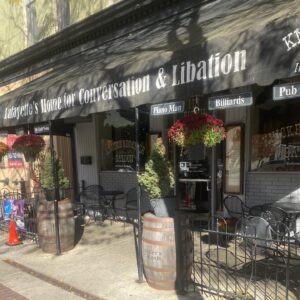 If the Knickerbocker Saloon in West Lafayette holds the “oldest bar” title in Indiana, the establishment known today as the Slippery Noodle Inn lays claim to being the oldest continually operating bar in Indiana, and it occupies the oldest commercial building in Indianapolis.
If the Knickerbocker Saloon in West Lafayette holds the “oldest bar” title in Indiana, the establishment known today as the Slippery Noodle Inn lays claim to being the oldest continually operating bar in Indiana, and it occupies the oldest commercial building in Indianapolis.
Today a well-known blues bar, the Slippery Noodle was established in 1850 as the Tremont House, though it went through a plethora of names (including Germania House, as it was an early entity serving Indianapolis’s burgeoning German community). Like the Log Inn, the Slippery Noodle is said to have served as a stop on the Underground Railroad, and ostensibly produced beer in its basement during Prohibition. With its present-day tin ceiling dating to 1890, the bar was also rumored to be a brothel until 1953.
The Noodle boasts several unusual attributes, from claims that it’s haunted to slugs in its basement walls from the infamous Dillinger and Brady gangs, to celebrity visitors like Harrison Ford, Jimmy Fallon, Peyton Manning, Billy Joel, Robert De Niro and Dan Aykroyd.
Any article on historic Hoosier eateries would be incomplete without a mention of the storied (if the pun can be pardoned) Story Inn, built in 1851 by Dr. George Story. The tiny community of Story, Indiana, essentially IS the Story Inn, though the Great Depression almost ended its existence, as it became a ghost town for some years before Rick Hofstetter purchased the entire town in the 1990s. The former logging town today has converted the various small-business buildings of its history into bed-and-breakfast-style cottages.
The whole scenario may also make Story one of Indiana’s smallest (if not THE smallest) towns, with less than five full-time residents! The Story Inn has become a destination, especially for visitors to beautiful Brown County.
While fast food, again, may not seem the ideal fare for a romantic Valentine’s dinner, it seems a missed opportunity in an article like this one not to mention some fascinating historical facts about fast food and Indiana, starting with the unusually named Triple XXX Family Restaurant in West Lafayette.
The Triple XXX joins the nearby Knickerbocker in the “first” list, but in this case it’s credited as the Hoosier state’s first drive-in restaurant. And while it isn’t old enough to have been serving food to horse-drawn buggies or traveling pioneer parties, its start date of 1929 marks it as quite early for a drive-in establishment.
Named for the Triple XXX root beer brand, a number of similarly named drive-ins operated around the country through the midcentury, but West Lafayette’s is the only one still in operation, offering not only the requisite root beer, but also classic Americana fare of the burger and fries variety.
While not dating back as far, it might surprise many Hoosiers to realize that one homegrown fast-food chain was, for a time, the chief rival to the mighty McDonald’s powerhouse.
The first Burger Chef restaurant was founded in Indianapolis in 1954 and had expanded, at its peak in 1973, to more than 1,000 restaurants nationwide (at the time, McDonald’s had around 1,600). Burger Chef, in fact, pioneered the offer of kids’ meals prior to McDonald’s doing so (Burger Chef even unsuccessfully sued the larger chain for stealing their idea), as well as the Works Bar, which allowed diners to choose their own fixings for their meals.
A failed (and costly) attempt to expand internationally in the 1970s didn’t help the chain, which by 1982 was purchased by Hardee’s owners General Foods, with many Burger Chefs converting to Hardee’s. A few retained the Burger Chef name for a brief time before the entire chain was shut down.
Two huge fast-food franchises also have lesser-known Indiana connections. Perhaps ironically, Kentucky Fried Chicken was actually founded by Hoosier-born Colonel Harland Sanders, who hailed from the southern Indiana community of Henryville. Harland resided in Indiana towns including New Albany, Greenwood and Columbus, before he moved to Kentucky and launched a restaurant advertising “finger-lickin’ good” fried chicken. Of course by the 1950s the restaurant had expanded into a chain and Sanders sold it in the 1960s, though he stayed on as a spokesman for years after.
Wendy’s founder Dave Thomas launched his first restaurant in Columbus, Ohio, but an important moment in his future eatery life is said to have occurred in Fort Wayne, Indiana. Like the aforementioned Sanders (with whom Thomas actually collaborated on the former’s KFC restaurant while Thomas lived in Fort Wayne), Thomas had a turbulent childhood, living in multiple states prior to finding himself living in Fort Wayne in his teens in the 1940s and working at the Hobby House restaurant there. The story goes that Thomas’s love of Hobby House’s chili and soft-serve “frosty” ice cream inspired two staple menu items at the Wendy’s chain he went on to found in 1969.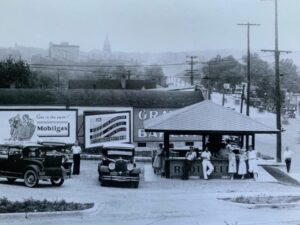
And so, whether it’s sharing a fine meal with that special someone in an eatery dating back to pioneer days, or just bringing home Frostys to the family as a Valentine’s Day treat, there’s plenty of Hoosier restaurant heritage to feast on.


